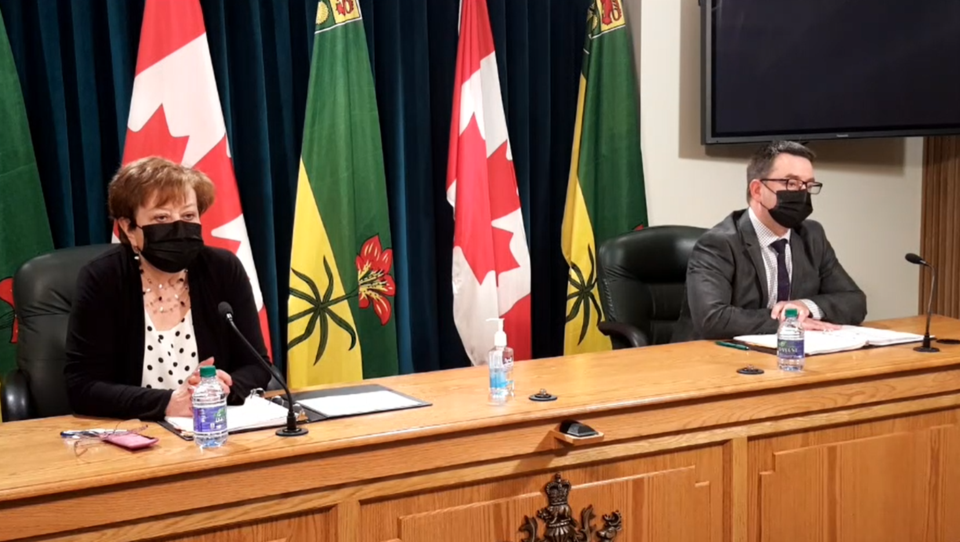Saskatchewan producers can expect a record high level of crop insurance coverage from the provincial program this year, with enhancements to the program announced leading into this year’s growing season.
Deputy premier and finance minister Donna Harpauer joined Jeff Morrow, acting president and CEO of Saskatchewan Crop Insurance Corporation (SCIC), to share details of the 2021 Crop Insurance program on Feb. 23.
“SCIC is dedicated to supporting Saskatchewan producers. The changes to the Crop Insurance program introduced today will continue to build on previous program enhancements,” said Harpauer.
Coverage under the SCIC is increasing 22 per cent, from $224 per acre last year to $273 per acre in 2021. The high value is accredited to higher commodity prices and increased yield coverage.
Due to coverage increases, the average premium cost per acre for producers in 2021 is expected to be higher than the previous year, reaching $8.59 compared to $7.40 in 2020.
The program is currently in a strong financial position, said officials, resulting in a 20 per cent reduction in average premium cost per dollar for the last six years, contributing to a 10-year average decline of 42 per cent.
“We understand that each farm operation is different. SCIC offers a suite of programs that work together to provide producers with comprehensive protection against the unexpected,” said Harpauer.
An annual review of establishment benefit values has resulted in an increase for several crops. Canola is now valued at $70 per acre, green lentils at $50 per acre, red lentils at $30 per acre and corn at $95 per acre.
Chickpea production is also on the rise in Saskatchewan, resulting in an update to the base grade for larger-scale Kabuli chickpeas to reflect current marketing patterns and increase the insured price and quality loss coverage.
The establishment benefit value of large Kabuli chickpeas will also be increasing to $65 per acre and small Kabuli chickpeas to $45 per acre.
“I think the changes to the chickpea base grade calculation better reflect the size and quality of chickpeas that Kabuli chickpea producers are producing these days,” said Carl Potts, executive director of Saskatchewan Pulse Growers. “It’s a welcome development and one we look forward to seeing in the marketplace.”
New in 2021
The SCIC is also increasing program opportunities for forage producers, allowing producers growing tame hay the option to insure their hay crops under the Forage Rainfall Insurance Program, where payments will now be calculated by rainfall levels instead of overall yields, or the Multi-Peril Crop Insurance Program. This option is new in 2021, following feedback from producers to reduce complexities during the insurance adjustment process.
Forage producers can also look forward to an increase in the Native Forage Establishment Program for newly seeded native forage acres, with coverage increasing from $75 to $200 per acre. Tame hay is increasing to $90 per acre and sweet clover to $65 per acre.
Coverage for large-scale vegetable growers is being introduced for the first time in 2021. In consultation with the Saskatchewan Vegetable Growers’ Association, the SCIC has developed new programming to support the rising sector.
New for 2021, the Commercial Vegetable Program is launching as a pilot program offering stand-alone coverage for damage to cabbage and pumpkin crops, the two most prominent commercial vegetable crops currently being grown in Saskatchewan.
“We’re quite pleased about some of the enhancements, in particular with the vegetable pilot program. We think that will create more diversity in the agriculture industry,” said Ray Orb, president of the Saskatchewan Association of Rural Municipalities.
Vegetable producers must have a minimum of eight acres to qualify for the pilot coverage program, with no limit on participation numbers. Currently, Morrow estimated that less than a dozen large-scale vegetable producers exist in Saskatchewan.
The deadline for producers to apply for or to make changes to current crop insurance contracts is on March. 31, and can be done by contacting their local SCIC office.




